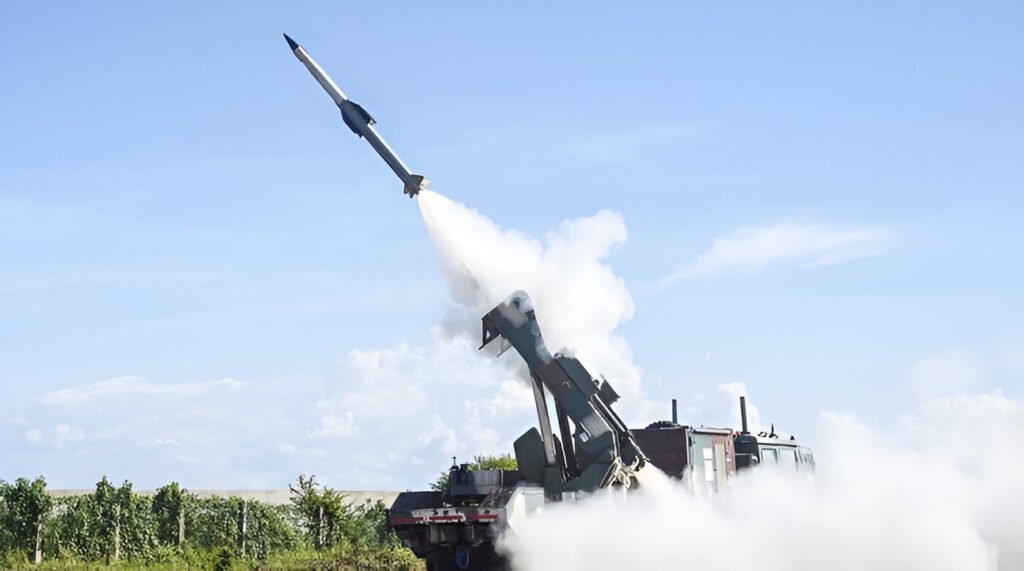
The installation of the self-sufficient Akash Teer Air Defence Control and Reporting System (ADCRS) manufactured by Bharat Electronics Limited (BEL) has changed the potency of India’s defense strategy. In light of recent conflicts in the western border region, Akashteer has served as a milestone achievement within the conflict, as it single-handedly stopped Pakistani attempts at aerial invasion, setting a new record for indigenous military innovation.
The Genesis of Akash Teer—India’s Answer to Modern Aerial Threats
Akashteer is a product of a self-sustaining concept developed by the Bharat scheme, which aimed to boost self-manufactured products. It was contracted in March 2023 for 1,982 crore, designing it with the objective to fully automate digitized air defense processes for the Indian Army, giving real-time modern capture and control setups instead of manual systems. The current fleet includes more than 100, and further supplies are expected to meet the demand.
Operation Sindoor: Akash Teer in Action
Akashteer’s first defensive fight was with Pakistan’s joint attack of drones and missiles on Indian cities and military target sites during the mid-May 2025 Sindoor Operation. India, on the other hand, switched on the multi-tier air defense system all the way up, with Akashteer acting as the centerpiece. The system effortlessly incorporated inputs from radar, early-warning systems, and ground-based sensors to provide a synced real-time airspace overview, enabling Indian forces to intercept and neutralize all aggressive missiles.
Disruption of the Pakistani Air Power: Tactical and Strategic Effects
Akashteer’s real-time threat identification and engagement features were instrumental. The system orchestrated the destruction of the Pakistani drones and the PL-15 missiles strategically over the cities of Srinagar, Jammu, Amritsar, Bathinda, and Chandigarh. Indian counteroffensive operations supported by real-time targeting information from Akashteer dealt massive strikes on 11 Pakistani air force bases and eliminated a large part of their fighter jet fleet, destroying approximately 20% of the Pakistan Air Force’s operational capability.

How Akashteer Works: Technology and Integration
Fundamentally, Akashteer integrates data from various sensor platforms, which include 3D tactical radars and the Akash Weapon System, into one operational picture. Sensor fusion of this depth can be devolved to the most basic operative levels, ensuring frontline commanders fully wield the bestowed delegation to engage. Automation of the systems eliminates the need to manually input data, which increases efficiency in responding to supersonic threats capable of traveling 18 kilometers in a minute.
Avoidance of Disharmony: Seamless Coordination with IACCS and Tri-Service Activities
Integration of the Akashteer weapon system with the IAF’s Integrated Air Command and Control System (IACCS) creates a seamless sensor-to-shooter interface across the Army and Air Force. Such integration ensures rapid data and information dissemination from ground, airborne, and space assets and faster “kill chains” in conjunction with improved airspace command and control (C2), particularly in joint army, navy, and air force operations.
Scalability, Resilience, and Future Threat Adaptation
Planned deployments of 455 systems by 2027 bestow upon Akashteer the potential to establish the digital “nerve center” of the air defense system in India. Designed to sustain operations through electronic warfare, adversarial conditions, and extreme weather, Akashteer’s communication architecture is built with advanced adaptive modularity. Fulfilling these orders will further enhance India’s strategic autonomy while simultaneously reducing the need for foreign imports, thus boosting national security.
Strategic Importance and Defense System Global Exportation Potential
The operational effectiveness of Akashteer enhances not only India’s defensive posture but also transforms the system into a future prospect for Indian defense exports. The indigenous development of such components emerges from the country’s prowess in technology, fortifying sovereignty while diminishing dependency on foreign sources.











